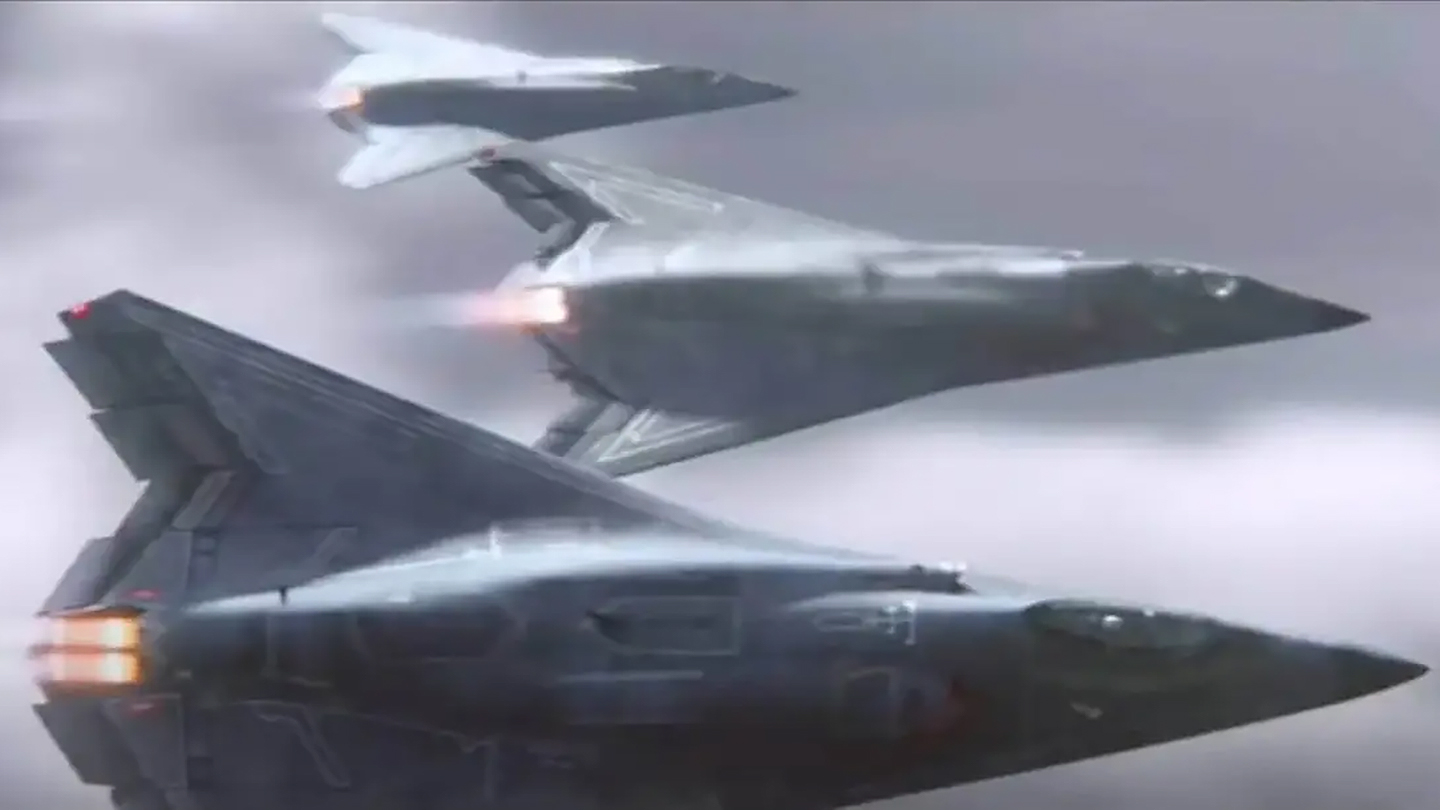The U.S. Air Force says it is conducting future airpower planning based around a notional fleet of around 1,000 advanced drones with high degrees of autonomy, as well as 200 Next-Generation Air Dominance stealth combat jets. This is the first time the service has given a real sense of the scope and scale of its plans for these two future aircraft types. We also now know that it is expecting that some F-35s will be paired with these advanced drones and have details about the general ratio between crewed and uncrewed assets involved in the initiative.
Secretary of the Air Force Frank Kendall provided new details about the service’s plans for what it is currently calling Collaborative Combat Aircraft, or CCAs, as well as its future sixth-generation crewed combat aircraft, in a keynote address today at the 2023 Air and Space Forces Association’s Warfare Symposium in Aurora, Colorado. Kendall, together with Assistant Secretary of the Air Force for Acquisition, Technology & Logistics Andrew Hunter, offered additional comments about these topics at a subsequent media roundtable. The War Zone was among those in attendance at both events.
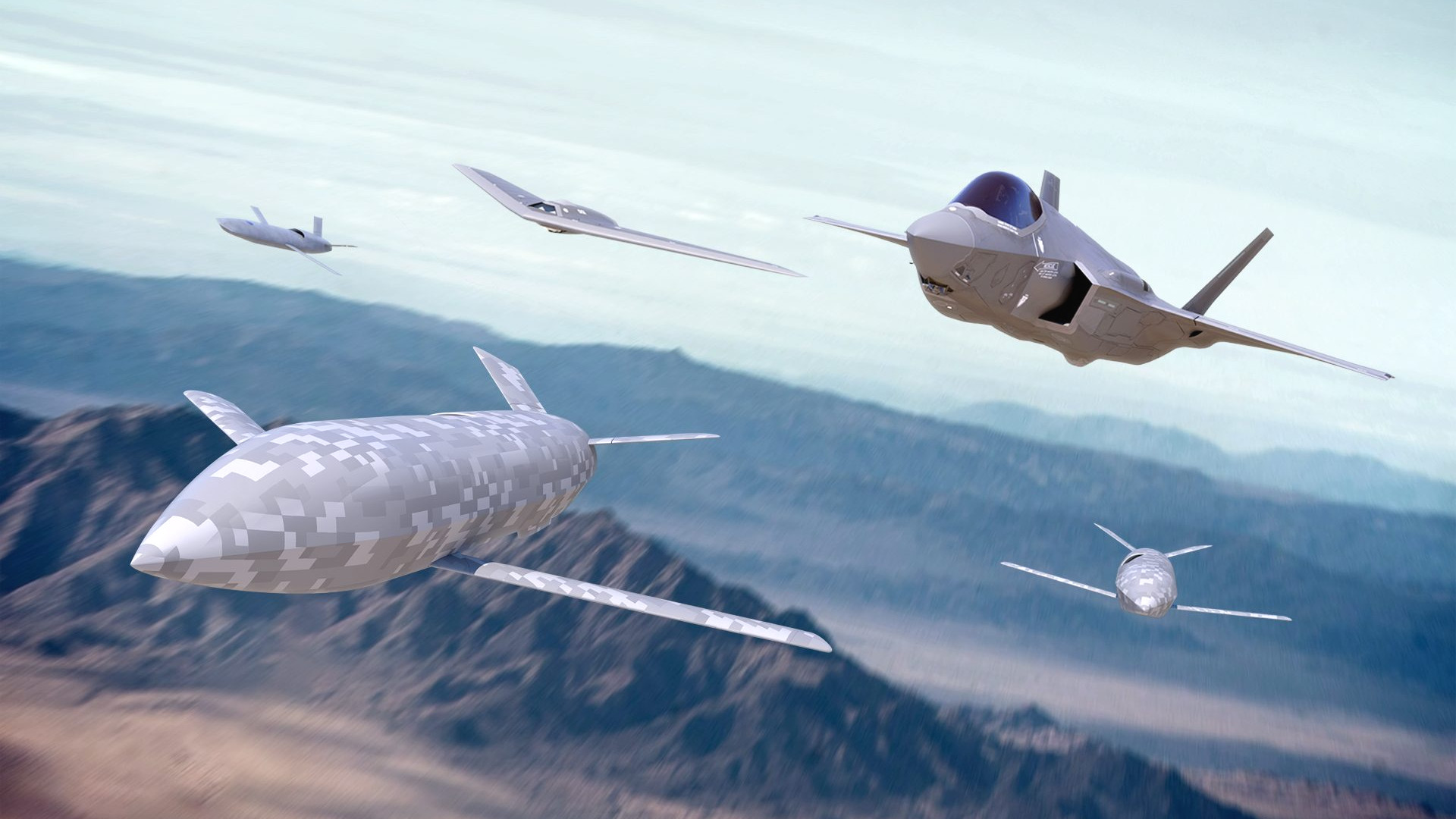
“The DAF [Department of the Air Force] is moving forward with a family of systems for the next generation of air dominance,” Kendall said in his speech. “That will include both an NGAD platform and the introduction of uncrewed collaborative aircraft to provide affordable mass and dramatically increased cost-effectiveness.”
The NGAD platform he referred to here is a sixth-generation stealthy crewed combat jet now under development. The future crewed combat aircraft and the CCAs are part of the Air Force’s broader NGAD initiative, which also includes work on new weapons, sensors, networking and battle management capabilities, advanced jet engines, and more, as you can learn more about here.
Air Force leadership has “recently given our planners a nominal quantity of collaborative combat aircraft to assume for planning purposes. The planning assumption is 1,000 CCAs,” Kendall continued. “This figure was derived from an assumed two CCAs for [each of] 200 NGAD platforms, and an additional two for each of 300 F-35s, for a total of 1,000.”
It’s worth pointing out that a total of 200 NGAD combat jets is roughly equivalent to the size of the Air Force’s F-22 Raptor stealth fighter fleet. The service announced its intention to phase out the F-22 back in 2021, with the clear implication that the type would be replaced by this new combat aircraft. We also know that F-22s are being used to support the development of its successor.
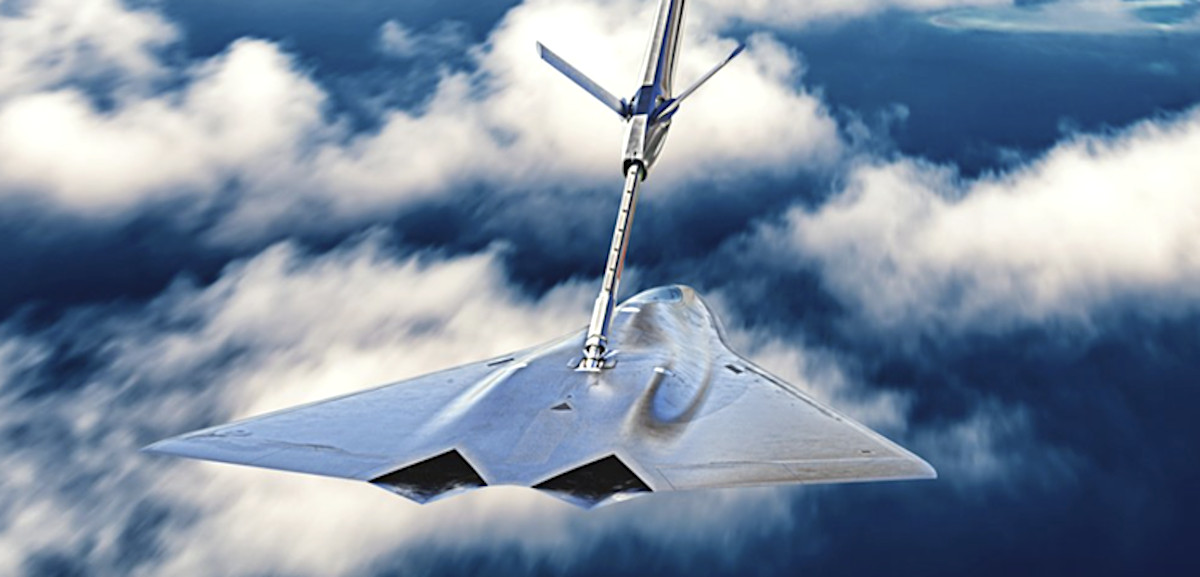
The figures Kendall provided also show the Air Force is looking at a concept of operations involving two CCAs per crewed combat aircraft, at least initially.
“This isn’t an inventory objective, but a planning assumption to use for analysis on things such as basing, organizational structures training, range requirements, and sustainment concepts,” Kendall added in his keynote speech.
The figures are “somewhat arbitrary,” but “we put that on the table as a way to basically structure that around what we think is a reasonable first tranche, reasonable ratio,” he elaborated at the roundtable. “We’ll learn as we go.”
The Air Force has previously made clear that its expectation is that the CCAs, at least initially, will be designed to work collaboratively with crewed combat jets. Kendall notably only mentioned the forthcoming NGAD combat jet and stealthy F-35 Joint Strike Fighters in his speech. However, CCAs, or other advanced drones developed separately, could still conceivably be paired with non-stealthy types, including older fighters and support platforms like tankers and airlifters, to give them significant boosts in capabilities.
Kendall did discuss the idea of pairing CCAs with B-21 Raider stealth bombers at the roundtable. He said that the Air Force looked into something like this and that “something with comparable range and meaningful payload that would go with B-21 didn’t turn out to look very cost-effective.” He added that “there might be ways in which the CCAs could be coupled with B-21s, although they’d have to be forward based some degree to do that,” speaking to the immense operational range that Raider is understood to have.
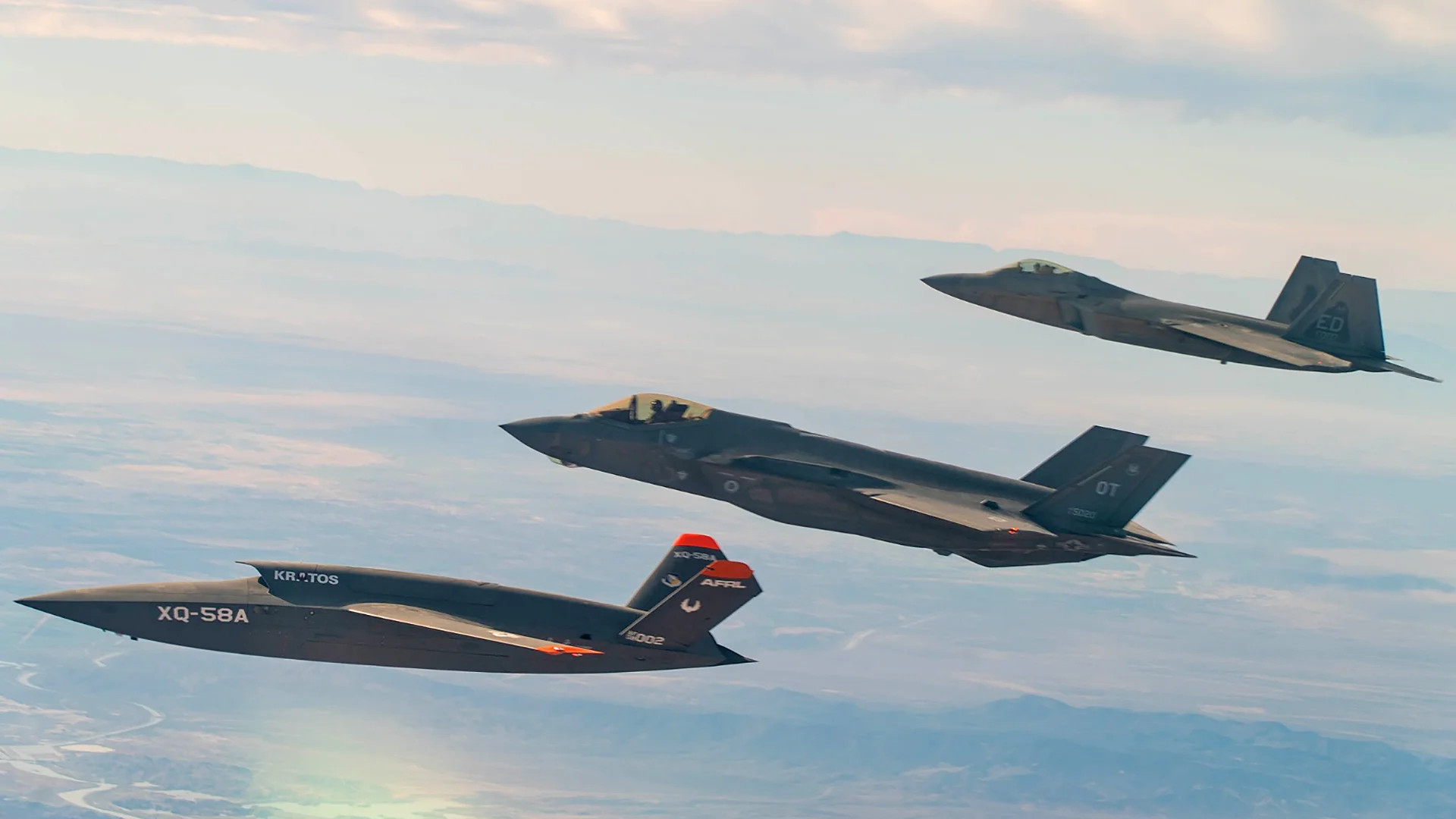
Air Force officials have also highlighted in the past how the introduction of CCAs is likely to prompt significant broader force structure and infrastructure changes, as you can read more about here. Still, Kendall stressed today that the service’s current CCA vision will not have any impacts on separate planning around crewed combat jets.
To give a sense of the basic scale of the CCA effort as it’s now being discussed, a fleet of 1,000 drones is larger than the Air Force’s fleets of F-22 Raptor stealth fighters, F-15E Strike Eagle combat jets, and A-10 Warthog ground attack aircraft combined, in terms of total airframes. It’s also more than three times how many MQ-9 Reaper drones the service has now.
CCAs are, of course, expected to have capabilities more focused on performing a much more limited number of mission sets – maybe even just one at a time. This, in turn, is expected to help keep acquisition and sustainment costs comparatively low.
“We’re shooting for [a] CCA to be a fraction of the cost of an F-35,” Kendall said at the roundtable without offering further granular details about expected costs. “One of my motivators… in initiating the CCA program was the affordability of the Air Force.”
Kendall continued by saying that the Air Force would become “unaffordable” if it continued to only buy current generation aircraft like the F-35A and F-15EX, as well as future NGAD combat jets, and that CCAs will offer additional “affordable mass.” He added that “if we ask for too much [of the CCAs] we’re gonna get bogged down trying to get what we need” and that the drones didn’t need to be “gold-plated” to provide important additional operational advantages.
The video below outlines a vision that Lockheed Martin unveiled last year of a future crew-uncrewed team involving the F-35 and various tiers of drones.

“One way to think of CCAs is as remotely controlled versions of the targeting pods, electronic warfare pods, or weapons now carried under the wings of our crewed aircraft,” Kendall said in his address. “CCA will dramatically improve the performance of our crewed aircraft and significantly reduce the risk to our pilots.”
This would seem to indicate the Air Force is expecting a high degree of ‘tethering’ between CCAs and the crewed platforms they’d be working with, at least initially. This is very much in line with older so-called “loyal wingman” concepts of operations for drones operating very closely linked together with crewed platforms. That also fits very much with the two CCAs to one crewed platform ratio that the notional 1,000 drone fleet allows for.
Kendall’s specific description of CCAs acting as extensions of the sensor, electronic warfare, and weapon on crewed platforms also aligns well with the still limited details that the Air Force has made public to date about its separate Off-Board Sensing Station (OBSS) program. You can read more about OBSS here.
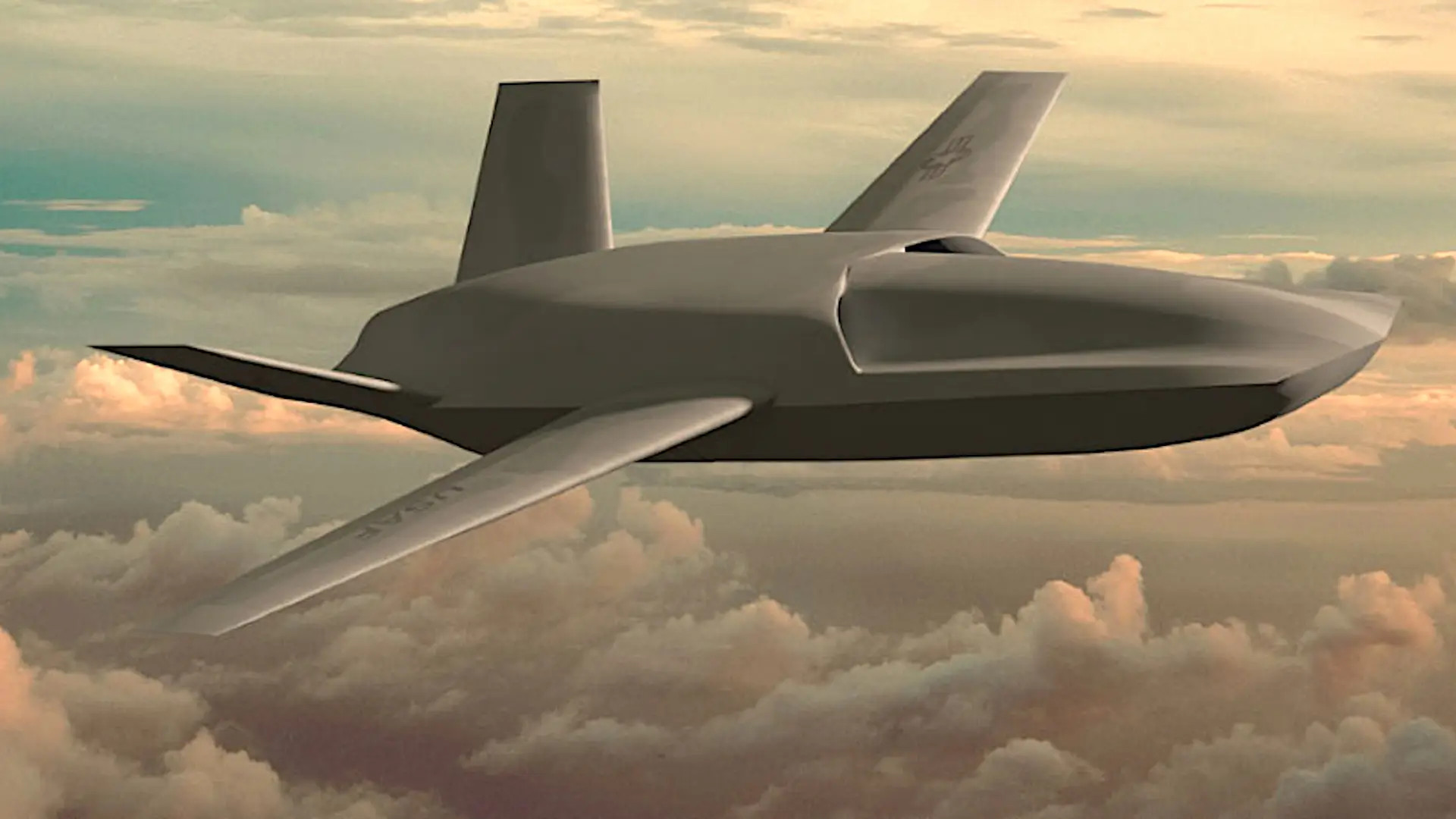
However, the Air Force and many of the industry partners it has already been engaging with on CCA and other related elements of the NGAD initiative have indicated that they are looking to move beyond this construct to a more collaborative environment that could eventually see these drones performing various tasks with greater autonomy. In addition, it still remains unclear how many different types of CCAs the service may be interested in acquiring, what actual inventory targets officials may be looking at now to meet various tiers of requirements, and how longer-term planning could affect the size and composition of crewed combat jet fleets.
The Air Force is clearly still refining the requirements for its future CCA drones, including what their capabilities might be and how they could be employed. That program is also leveraging work on crewed-uncrewed teaming, autonomy, and other associated developments that the Air Force and other elements of the U.S. military have been conducting through a slew of separate projects.
At today’s media roundtable, Kendall specifically highlighted work done through the U.S. Defense Advanced Research Projects Agency’s (DARPA) Air Combat Evolution (ACE) program, as well as the development of an advanced stealthy loyal wingman drone for the Royal Australian Air Force (RAAF) by Boeing’s division in that country. That latter design is now known as the MQ-28 Ghost Bat and the Air Force, through the Pentagon, has acquired at least one of these drones for testing purposes.
The Air Force Secretary also brought up the service’s own Skyborg initiative. Skyborg, and the associated Autonomous Aircraft Experimentation (AAx) testing campaign, has focused on the development of an artificial intelligence (AI) driven “computer brain” and related systems designed to provide advanced autonomous capabilities to various tiers of aircraft. Those technologies are among the ones now being tested through AAx.
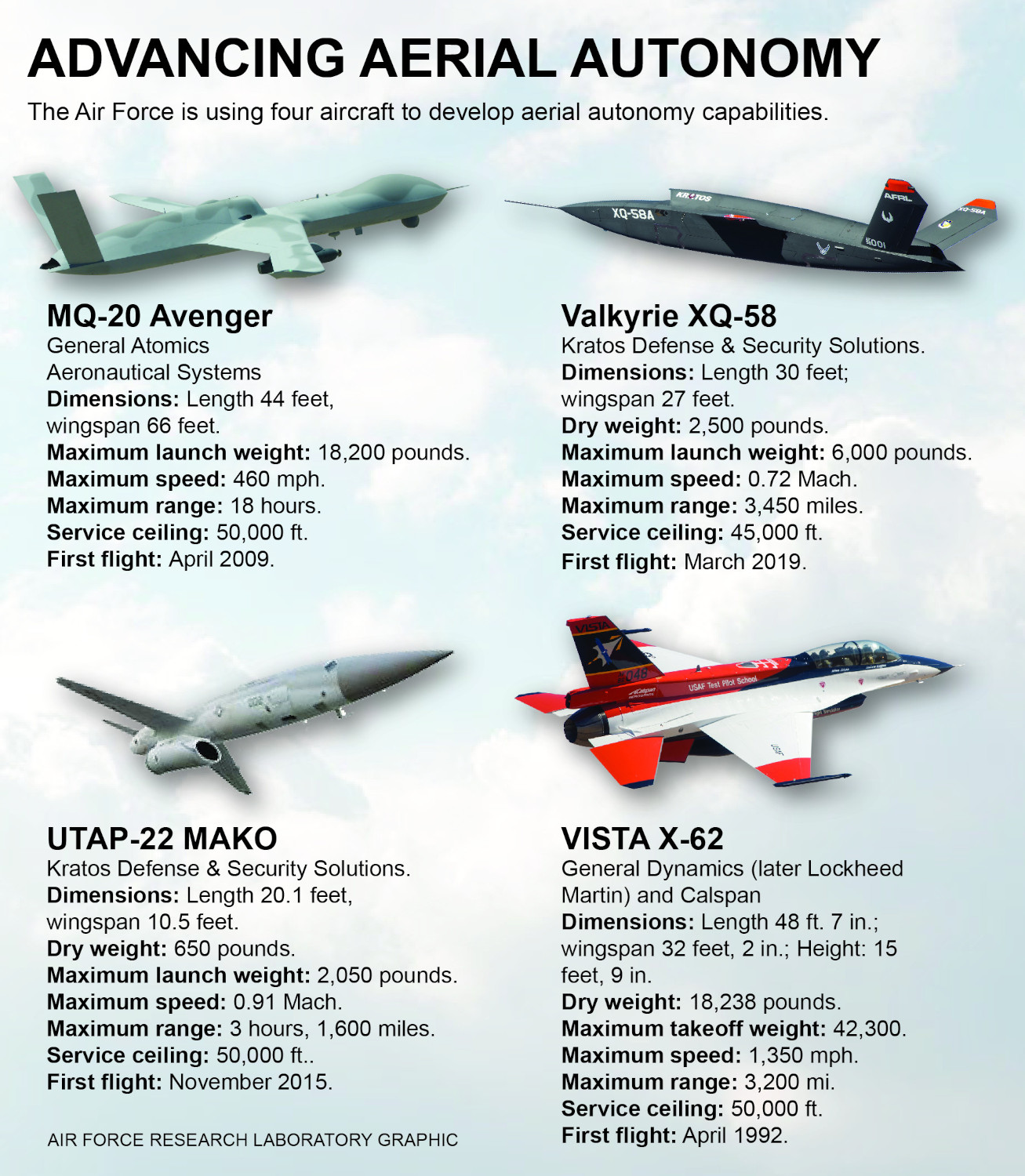
“We will be requesting the resources needed to move these programs along with associated risk-reduction activities that will allow us to explore operational, organizational, and support concepts, as well as reduce technical risk,” Kendall said in his address.
“We’re also going to be doing some things in the budget… which will get us some experimentation in units and buy some assets that are not the ultimate CCA,” Kendall said that the later roundtable. “We could use [those assets] for a variety of things. To develop operational concepts, to develop technology, reduce the risk of overhead for the CCA, and also start to think through some things like how we train [and] what kind of organizational structures we have. So, there’s still a lot to be done here.”
With this in mind, additional information about the program more generally could be included in the service’s upcoming budget proposal for the 2024 Fiscal Year, a public version of which is expected to be released next week. However, Kendall and others have said in the past that many aspects of the CCA program will be highly classified.
What is clear from Kendall’s comments today is that the Air Force is working now to answer many of these questions as it works to solidify its visions for its future CCAs and NGAD combat aircraft. Maybe even more importantly, we now have an indication of the proposed fleet size of the manned NGAD platform.
Howard Altman contributed to this report.
Contact the author: joe@thedrive.com
